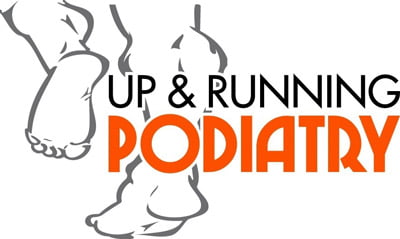Metatarsalgia is a condition causing pain in the ball of the foot, often due to excessive pressure from activities, improper footwear, or foot deformities. Symptoms include burning pain, numbness, and discomfort that worsens with movement. Treatment options include supportive footwear, custom orthotics, shockwave therapy, foot mobilisation, and strengthening exercises. Seeking help from a podiatrist can provide tailored solutions to relieve pain and restore foot function
Ever felt a sharp, burning pain in the ball of your foot that just won’t go away?
Walking should be second nature, but for some, every step feels like stepping on a pebble. If that sounds familiar, you might be dealing with metatarsalgia—a common condition that affects the ball of the foot and makes even short walks unbearable.
What is Metatarsalgia?
Metatarsalgia isn’t a specific injury—it’s a broad term used to describe pain and inflammation in the ball of the foot. This discomfort usually comes from excessive pressure on the metatarsal bones, which can happen due to overuse, improper footwear, or certain medical conditions.
“Metatarsalgia is one of the most common reports in patients with foot problems. This pain is confined to the area across the plantar forefoot, including the second through fourth metatarsal heads.” Espinosa et al., 2010
While anyone can develop metatarsalgia, it’s particularly common among runners, athletes, and people who spend long hours on their feet. If left untreated, the pain can worsen and affect overall foot function.
What Causes Metatarsalgia?
There’s no single cause of metatarsalgia—several factors can contribute to this painful condition, including:
- High-impact activities – Running, jumping, and sports that involve frequent foot movement can lead to excessive stress on the forefoot.
- Poorly fitted shoes – Wearing shoes with little cushioning or high heels can put too much pressure on the metatarsals.
- Foot deformities – Conditions like hammertoes, bunions, and high arches can cause uneven weight distribution, leading to pain.
- Excess weight – Extra body weight increases pressure on the forefoot, making metatarsalgia more likely.
- Nerve conditions – Morton’s neuroma, a thickening of the tissue around the nerves leading to the toes, often causes symptoms similar to metatarsalgia.
Research has shown that improper foot mechanics can also play a huge role in developing this condition. A study published in the Journal of Foot and Ankle Research highlights how repetitive impact and faulty gait patterns contribute to forefoot pain.
What Are the Symptoms?
Metatarsalgia usually starts as a mild ache and can gradually turn into sharp, burning pain—especially after standing or walking for long periods. Some common symptoms include:
- Pain in the ball of the foot that worsens with activity
- A sensation of walking on pebbles
- Numbness or tingling in the toes
- Increased pain when walking barefoot or on hard surfaces
For many, the discomfort comes and goes, but without treatment, it can become a long-term issue that affects mobility.
How is Metatarsalgia Treated?
The good news? You don’t have to live with foot pain forever. There are several ways to relieve metatarsalgia, and in most cases, surgery isn’t necessary. Treatment options include:
Wearing Supportive Footwear
One of the first things to consider is your shoes. Tight, unsupportive, or high-heeled shoes can make symptoms worse. Opt for well-cushioned, supportive footwear with a roomy toe box to reduce pressure on the metatarsals.
Custom Orthotics
Orthotic inserts can provide extra cushioning and support, redistributing weight more evenly across the foot. At Up and Running Podiatry, we offer custom orthotics designed to relieve pressure and improve foot function.
Shockwave Therapy
Shockwave therapy has been shown to be effective in treating chronic foot pain, including metatarsalgia. Studies, such as the one published in the Journal of Orthopaedic Surgery and Research, indicate that this therapy can help stimulate healing and reduce inflammation.
At Up and Running Podiatry, we provide shockwave therapy as a non-invasive treatment option for foot pain.
Foot Mobilisation Therapy
Sometimes, restricted joint movement can lead to metatarsalgia. Foot mobilisation therapy helps restore normal foot function by using gentle movements to improve alignment. This approach is available at our clinic.
Stretching and Strengthening Exercises
Strengthening the muscles in your feet can help reduce pressure on the metatarsals. A study in the Journal of Foot and Ankle Research suggests that toe exercises can significantly reduce pain and improve stability.
When Should You See a Podiatrist?
If your foot pain is interfering with daily activities, it’s time to seek professional help. A podiatrist can assess your foot structure, gait, and footwear to create a personalised treatment plan. At Up and Running Podiatry, our team specialises in treating forefoot pain with tailored solutions to get you back on your feet.
You can book an appointment online to find the best treatment option for your needs.
Final Thoughts
Metatarsalgia can be frustrating, but with the right treatment, you can get back to walking, running, and moving without pain. Whether it’s better footwear, orthotics, or podiatry care, addressing the issue early can prevent long-term problems.
Don’t let foot pain hold you back—schedule a visit with Up and Running Podiatry today and take the first step toward pain-free movement.

